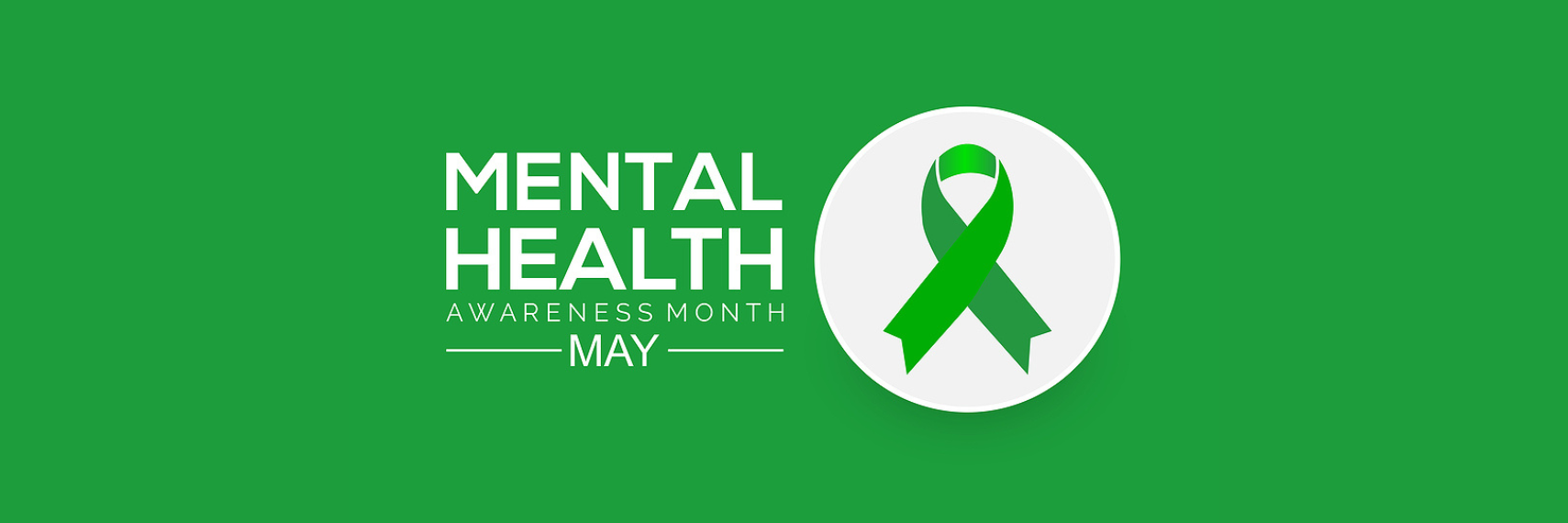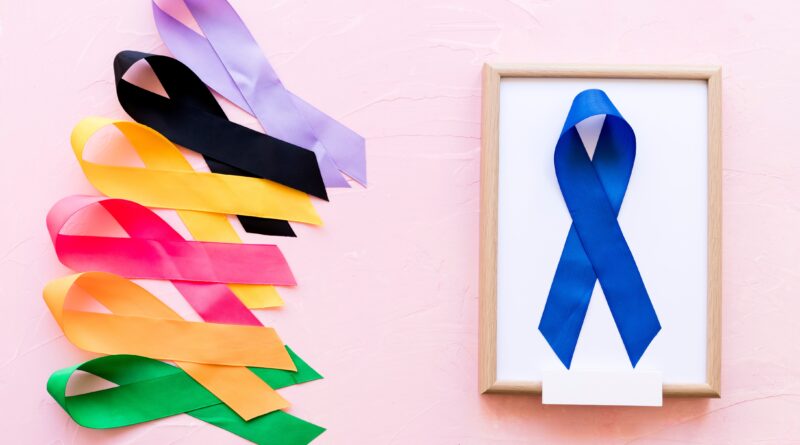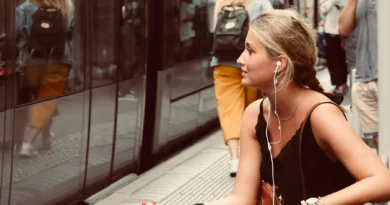Color for Mental Health Awareness: Boosting Well-being Through Hues
Color plays a significant role in our lives. It can affect our mood and emotions.
Mental health awareness is crucial in today’s society. Colors have the power to communicate feelings and messages. They can help us understand and recognize mental health issues. Green is often used for mental health awareness. This color represents growth, renewal, and hope.
It is calming and soothing. Using the right colors can start conversations about mental health. It can reduce stigma and encourage support. Understanding how colors impact our minds can lead to better awareness and empathy. Let’s explore how different colors contribute to mental health awareness. This knowledge can help us create a more supportive environment for everyone.
Significance Of Color
Color plays a crucial role in our lives. It affects our emotions, behaviors, and mental health. Understanding the significance of color can help in raising mental health awareness. Colors can have a profound impact on how we feel and how we perceive the world around us.
Emotional Impact
Colors have the power to evoke a range of emotions. Each color can trigger different feelings and reactions. Here are some examples:
- Red: Often associated with energy, passion, and urgency. It can increase heart rate and create a sense of excitement.
- Blue: Known for its calming effect. It can reduce stress and create a sense of tranquility. Many people find blue to be soothing and relaxing.
- Yellow: Represents happiness and optimism. It can lift moods and create a sense of warmth and cheerfulness.
- Green: Symbolizes nature and balance. It can promote a sense of harmony and renewal.
- Purple: Often linked to creativity and luxury. It can stimulate imagination and inspire creativity.
These emotional impacts can be used in various settings to improve mental health. For example, painting a room blue can create a peaceful environment. Using yellow in a workspace can boost positivity and productivity.
| Color | Emotion |
|---|---|
| Red | Energy, Passion |
| Blue | Calm, Tranquility |
| Yellow | Happiness, Optimism |
| Green | Balance, Renewal |
| Purple | Creativity, Luxury |
Cultural Associations
Colors carry different meanings in various cultures. Understanding these associations can help in creating inclusive and sensitive mental health campaigns. Here are some examples:
- White: In many Western cultures, white represents purity and innocence. In some Eastern cultures, it is associated with mourning and funerals.
- Black: Commonly linked with elegance and sophistication in Western cultures. In many cultures, it also symbolizes death and sorrow.
- Red: In China, red is a color of luck and prosperity. In some cultures, it can signify danger or warning.
- Green: In the Middle East, green is associated with Islam and considered sacred. In Western cultures, it often represents nature and health.
- Blue: In many cultures, blue is seen as a symbol of trust and stability. In some cultures, it can also represent sadness.
These cultural associations are important in global mental health initiatives. Using colors appropriately can ensure messages are received positively. For instance, using green in a campaign in the Middle East can enhance its effectiveness. Here’s a quick reference table:
| Color | Western Meaning | Other Cultural Meanings |
|---|---|---|
| White | Purity, Innocence | Mourning (Eastern) |
| Black | Elegance, Sophistication | Death, Sorrow |
| Red | Energy, Passion | Luck, Prosperity (China) |
| Green | Nature, Health | Sacred (Middle East) |
| Blue | Trust, Stability | Sadness |

Colors For Awareness
Color plays a vital role in mental health awareness. Different colors can evoke various emotions and represent different aspects of mental health. Understanding these colors can help spread awareness and create a supportive environment. Let’s explore the popular colors used for mental health awareness and their symbolism.
Popular Colors
Several colors are associated with mental health awareness. Each color carries a unique significance and can be seen in various campaigns and initiatives. Here are some of the most popular colors:
- Green: Often linked with mental health awareness, green represents growth and renewal.
- Yellow: This color is associated with happiness and positivity, making it a great choice for spreading awareness about mental well-being.
- Blue: Known for its calming effects, blue is used to symbolize peace and tranquility in mental health contexts.
- Purple: Frequently used to represent mental health, purple signifies courage and strength.
- Orange: This vibrant color is associated with energy and enthusiasm, promoting awareness and hope.
These colors not only help in raising awareness but also in creating a sense of unity and support for those struggling with mental health issues.
Symbolism Of Each Color
Each color used in mental health awareness carries a specific symbolism that helps convey important messages.
| Color | Symbolism |
|---|---|
| Green | Green symbolizes growth, balance, and renewal. It represents the importance of taking care of mental health and the potential for positive change. |
| Yellow | Yellow stands for happiness, positivity, and optimism. It encourages a hopeful outlook and the importance of maintaining a positive mindset. |
| Blue | Blue represents calmness, peace, and tranquility. It highlights the need for a serene mind and the importance of mental peace. |
| Purple | Purple signifies courage, strength, and resilience. It honors the bravery of those dealing with mental health challenges and encourages support. |
| Orange | Orange is associated with energy, enthusiasm, and encouragement. It promotes awareness and inspires hope and action. |
Using these colors in mental health campaigns can make a big impact. They not only spread awareness but also provide emotional support and understanding.
Color Psychology
Color plays a significant role in our daily lives, influencing our perceptions and emotions. Color Psychology studies how different hues impact human behavior and mood. This field has gained attention for its potential benefits in mental health awareness. Understanding color psychology can help us create environments that promote well-being and mental health.
Effects On Mood
Colors have a profound impact on our emotions. Different colors can evoke various moods and feelings. For instance:
- Red: Often associated with energy, passion, and excitement. It can increase heart rate and create a sense of urgency.
- Blue: Known for its calming and serene effects. Blue can reduce stress and create a sense of peace.
- Yellow: Associated with happiness and positivity. It can uplift mood and boost confidence.
- Green: Represents nature and tranquility. Green can create a sense of balance and calm.
- Purple: Often linked to creativity and luxury. It can inspire imagination and spiritual awareness.
Here is a table summarizing the effects of different colors on mood:
| Color | Effect on Mood |
|---|---|
| Red | Energy, Passion, Urgency |
| Blue | Calm, Peace, Stress Reduction |
| Yellow | Happiness, Positivity, Confidence |
| Green | Balance, Calm, Tranquility |
| Purple | Creativity, Luxury, Spiritual Awareness |
Therapeutic Uses
Using colors in therapy, known as color therapy or chromotherapy, can aid in mental health treatment. Therapists use specific colors to help improve emotional and physical well-being. For example:
- Red: Used to stimulate and energize. It can help combat feelings of fatigue and lethargy.
- Blue: Helps reduce anxiety and promote relaxation. Often used in spaces designed for meditation and stress relief.
- Yellow: Can enhance mood and increase concentration. Useful in therapeutic settings for individuals dealing with depression.
- Green: Promotes balance and healing. Often used in environments to reduce stress and create harmony.
- Purple: Encourages creativity and spiritual growth. Used in therapy to inspire and calm the mind.
Color therapy can be integrated into various settings to support mental health:
- Hospitals: Use calming colors like blue and green to create a healing environment.
- Schools: Bright colors like yellow can boost concentration and learning.
- Workplaces: Colors like blue and green can reduce stress and increase productivity.
- Homes: Personal spaces can be designed with colors that promote relaxation and happiness.
Understanding how colors affect mood and their therapeutic uses can help create environments that support mental health and well-being.
Campaigns And Initiatives
Color for Mental Health Awareness has become a vital part of spreading knowledge about mental health issues. Campaigns and initiatives worldwide use color to highlight the importance of mental health. These efforts aim to educate, reduce stigma, and encourage individuals to seek help. Let’s explore some of these impactful campaigns.
Global Movements
Several global movements use color to promote mental health awareness. These initiatives reach a broad audience, ensuring the message of mental health is loud and clear. World Mental Health Day is observed on October 10th every year. The day often features the color green, symbolizing new life, growth, and renewal. Various events and activities take place globally, including:
- Awareness walks and runs
- Seminars and workshops
- Social media campaigns
The Green Ribbon Campaign is another significant initiative. The green ribbon is an international symbol for mental health awareness. People wear green ribbons to show their support and spread the message. Schools, workplaces, and communities participate by:
- Hosting mental health fairs
- Organizing green-themed events
- Distributing educational materials
These global movements play a crucial role in normalizing conversations about mental health. They encourage people to seek help and support each other.
Local Efforts
Local communities also play a key role in promoting mental health awareness. These efforts often have a more personal touch, making a direct impact on individuals. Many schools and universities organize mental health weeks. These events include:
- Workshops on stress management
- Counseling sessions
- Art therapy classes
Local businesses also contribute by creating mental health-friendly workplaces. They often provide:
- Employee assistance programs
- Stress-relief activities
- Access to mental health resources
Community centers host support groups and educational sessions. These programs aim to create a safe space for individuals to share their experiences and find support. They also organize:
- Mindfulness and meditation sessions
- Fitness classes for mental well-being
- Workshops on coping strategies
Local efforts are vital in building a supportive environment for mental health. They ensure that help and resources are accessible to everyone in the community.
Art And Color Therapy
Art and Color Therapy is a powerful tool in mental health awareness. It uses creative processes to help people express themselves. This form of therapy leverages colors to evoke emotions and aid in healing. Understanding how different colors impact mental health can enhance the therapeutic experience.
Creative Expression
Creative expression is a key component of art and color therapy. It allows individuals to convey their feelings through art. This can be especially helpful for those who find it hard to verbalize their emotions. Here are some ways creative expression helps in therapy:
- Emotional Release: Painting, drawing, or sculpting can help release pent-up emotions.
- Self-Discovery: Art can reveal hidden thoughts and feelings.
- Stress Relief: Engaging in creative activities reduces stress and anxiety.
In art therapy sessions, therapists often use different colors to evoke specific emotions. For instance, blue can evoke calmness, while red can signify passion or anger. Here’s a simple table showing the common emotional associations of various colors:
| Color | Emotion |
|---|---|
| Red | Passion, Anger |
| Blue | Calm, Sadness |
| Yellow | Happiness, Energy |
| Green | Peace, Growth |
| Purple | Creativity, Mystery |
Understanding these associations can help in tailoring art therapy sessions to individual needs. By choosing the right colors, therapists can enhance the healing process.
Healing Benefits
Art and color therapy offer numerous healing benefits. These benefits go beyond emotional expression. They contribute to overall mental well-being. Some notable healing benefits include:
- Improved Mood: Creating art can boost mood and overall happiness.
- Enhanced Focus: Engaging in artistic activities improves concentration.
- Social Interaction: Group art sessions foster social connections.
Art therapy is not limited to just painting or drawing. Various forms of creative activities can be therapeutic. These include:
- Collage making
- Photography
- Clay modeling
- Textile arts
Incorporating color into these activities can further enhance their healing properties. For example, using calming colors like blue and green in a collage can provide a sense of peace. Conversely, vibrant colors like yellow and orange can invigorate and energize. Overall, the healing benefits of art and color therapy are vast. They provide a safe space for individuals to explore and understand their emotions. This, in turn, leads to better mental health and improved quality of life.

Color In Branding
Color plays a significant role in mental health awareness. Different colors evoke different emotions and reactions. In branding, color choices can influence public perception and engagement. Brands use colors to create connections with their audience. This is especially true for mental health awareness campaigns.
Logos And Awareness
A logo is often the first thing people see about a brand. For mental health awareness, logos need to be thoughtful and impactful. The right color can convey the message effectively. Some colors commonly used in mental health awareness include:
- Green: Represents growth, renewal, and hope. It is often associated with mental health awareness.
- Blue: Symbolizes calmness and stability. It can be soothing and reassuring.
- Purple: Stands for creativity and wisdom. It is also linked to mental health.
Choosing the right color for a logo can make a difference. It can help the audience relate to the cause. Here is a table showing the impact of different colors in logos:
| Color | Emotion | Example |
|---|---|---|
| Green | Hope | Mental Health Foundation |
| Blue | Calmness | National Alliance on Mental Illness |
| Purple | Creativity | Mind |
These colors are not just visually appealing. They also resonate with the cause and enhance awareness.
Impactful Campaigns
Campaigns for mental health awareness use color to draw attention. They also use it to create an emotional connection. Effective campaigns understand the psychology of color. For example, a campaign might use green ribbons. This simple color choice can unite people and spread the message of hope and renewal. Other impactful campaign elements include:
- Social Media Graphics: Using consistent colors in posts and banners.
- Event Decorations: Colorful balloons, posters, and t-shirts.
- Merchandise: Bracelets, pins, and stickers in theme colors.
Here is a list of successful campaigns:
- Green Ribbon Campaign: Uses green ribbons to promote mental health awareness.
- World Mental Health Day: Uses blue and green to symbolize support and hope.
- Purple for Anxiety Awareness: Uses purple to highlight anxiety issues.
Colors in these campaigns help create a strong visual identity. They also help people remember the message. Using color strategically can amplify the reach and impact of mental health awareness campaigns.
Personal Use Of Color
Color affects our emotions and mental health. Personal use of color can improve well-being and uplift moods. Incorporating the right colors into our daily lives can make a significant difference.
Home Decor
Using colors in home decor can create a calming and positive environment. Colors like blue and green are known for their calming effects. They can make a room feel more peaceful and relaxing. Tips for Using Color in Home Decor:
- Blue: Ideal for bedrooms and bathrooms. It promotes relaxation and calmness.
- Green: Perfect for living rooms and kitchens. It brings a sense of nature and tranquility.
- Yellow: Great for kitchens and dining areas. It adds warmth and cheerfulness.
- Purple: Suitable for meditation rooms or creative spaces. It enhances creativity and calm.
Consider using a mix of these colors to balance the energy in your home. For example, a blue bedroom with green accents can create a harmonious space for relaxation. Adding yellow elements in the kitchen can make it a happy, lively place. Here’s a table summarizing the effects of different colors:
| Color | Effect | Best Used In |
|---|---|---|
| Blue | Calm, Relaxation | Bedrooms, Bathrooms |
| Green | Nature, Tranquility | Living Rooms, Kitchens |
| Yellow | Warmth, Cheerfulness | Kitchens, Dining Areas |
| Purple | Creativity, Calm | Meditation Rooms, Creative Spaces |
Fashion Choices
Choosing the right colors in your wardrobe can boost your mood and confidence. Colors have a psychological impact that can influence how you feel throughout the day. Color Recommendations for Fashion:
- Red: Increases energy and excitement. Great for workout clothes or a night out.
- Blue: Promotes calm and trust. Perfect for work attire and meetings.
- Yellow: Adds cheerfulness and positivity. Ideal for casual outings.
- Green: Brings balance and harmony. Suitable for everyday wear.
Mixing and matching these colors in your wardrobe can have a positive effect on your mental health. For instance, wearing a blue shirt to work can help you stay calm and focused. A yellow dress on a weekend can uplift your mood and spread positivity. Here’s a quick guide:
| Color | Effect | Best For |
|---|---|---|
| Red | Energy, Excitement | Workouts, Nights Out |
| Blue | Calm, Trust | Work Attire, Meetings |
| Yellow | Cheerfulness, Positivity | Casual Outings |
| Green | Balance, Harmony | Everyday Wear |
Experiment with these colors to find what works best for you. Let colors support your mental health journey.

Future Trends
Colors play a big role in mental health awareness. They can influence emotions and thoughts. Future trends in this field show exciting changes. These trends include new colors and sustainable practices. Let’s explore what the future holds.
Emerging Colors
New colors are making waves in mental health awareness. These emerging colors aim to create positive impacts on mental well-being. Consider these colors:
- Soft Greens: These colors promote calm and peace. They are linked to nature and growth.
- Pale Blues: These shades are soothing and help reduce anxiety. They remind people of the sky and sea.
- Warm Yellows: These colors bring happiness and energy. They are uplifting and cheerful.
Designers and artists are incorporating these colors into their work. Public spaces, such as hospitals and schools, are also using these hues. They aim to create environments that support mental health. A table showing the benefits of these colors:
| Color | Benefit |
|---|---|
| Soft Green | Promotes calm and peace |
| Pale Blue | Reduces anxiety |
| Warm Yellow | Brings happiness and energy |
Sustainability In Awareness
Sustainability is becoming important in mental health awareness efforts. Using eco-friendly materials and practices helps the environment and mental health. Key sustainable practices include:
- Eco-friendly Paints: Paints free from harmful chemicals are safer for both people and the environment.
- Recycled Materials: Using recycled materials for art and displays reduces waste.
- Energy-efficient Lighting: LED lights use less energy and reduce stress on the eyes.
Organizations are adopting these practices to support mental health. They are creating awareness campaigns that focus on sustainability. A table showing sustainable practices and their benefits:
| Practice | Benefit |
|---|---|
| Eco-friendly Paints | Safer for people and the environment |
| Recycled Materials | Reduces waste |
| Energy-efficient Lighting | Uses less energy, reduces eye stress |
These practices show a commitment to both mental health and the planet. They highlight the importance of combining awareness with sustainability.
Frequently Asked Questions
What Color Represents Mental Health Awareness?
Green is the color that represents mental health awareness. It symbolizes hope, strength, and support for individuals affected by mental health issues.
Why Is Green Used For Mental Health?
Green is used for mental health because it signifies growth, renewal, and the importance of mental well-being. It promotes a sense of calmness and tranquility.
How Can Colors Impact Mental Health?
Colors can impact mental health by influencing emotions and moods. Certain colors can create a calming effect, reduce stress, and promote relaxation.
What Is The History Of Mental Health Awareness Color?
The green ribbon was first used in 1949 to raise awareness about mental health. It has since become a symbol of mental health advocacy.
Conclusion
Colors play a vital role in mental health awareness. They help convey emotions and messages. Remember, each color can evoke different feelings. Choose colors that promote calmness and positivity. Use these colors in your surroundings. They can make a difference in well-being.
Stay aware of their impact on mental health. Share this knowledge with others. Support mental health initiatives using color. Together, we can create a more understanding world.




